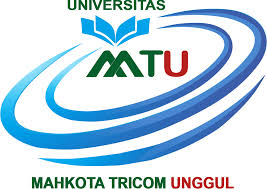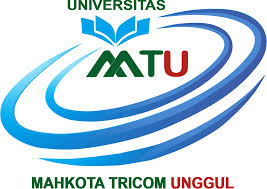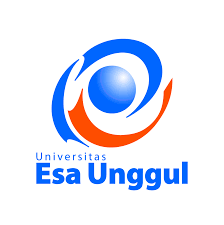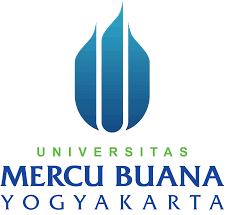The Impact of E-WOM Social Media in Influencing Destination Image and Visit Intention in the Context of Tourism Industry: An Empirical Investigation of Social Media Enterprise Instagram Followers in Malang Raya, East Java
DOI:
https://doi.org/10.55927/fjmr.v4i3.117Keywords:
Electronic Word of Mouth (E-WOM), Destination Image, Attitude Towards Destination, Visit Intention, Social Media EntrepriseAbstract
Promotion of tourism using social media in the current era is no longer something new, this is a special attraction for tourism industry players in promoting tourist attractions. Rapid technological changes and changes in tourist behavior have changed competition in the tourism industry. So, this can have an impact on drastically increasing digital tourism opportunities. This research aims to test and explain electronic word of mouth (E-WOM) can influence destination image and its impact on visit intention on followers of enterprise social media Instagram accounts operating in the tourism sector in Malang Raya. This research is explanatory research with quantitative methods. Data was obtained from 400 followers of enterprise social media Instagram accounts. Structural Equation Modeling (SEM) with SmartPLS 4.0 is used as a data analysis tool. The research results show that electronic word of mouth (E-WOM) has a positive and significant effect on destination image and visit intention. This means that the role of social media enterprises operating in the Malang Raya tourism sector is good in improving the image of available tourist destinations and increasing tourists' intention to visit tourist destinations in Malang Raya currently.
References
Abubakar, A. M., & Ilkan, M. (2016). Impact of online WOM on destination trust and intention to travel: A medical tourism perspective. Journal of Destination Marketing and Management, 5(3), 192–201. https://doi.org/10.1016/j.jdmm.2015.12.005
Anubha, & Shome, S. (2021). Intentions to use travel E-WOM: mediating role of Indian urban millennials’ attitude. International Journal of Tourism Cities, 7(3), 640–661. https://doi.org/10.1108/IJTC-04-2020-0073
Bianchi, C., Milberg, S., & Cúneo, A. (2017). Understanding travelers’ intentions to visit a short versus long-haul emerging vacation destination: The case of Chile. Tourism Management, 59, 312–324. https://doi.org/10.1016/j.tourman.2016.08.013
Bresciani, S., Thrassou, A., & Vrontis, D. (2015). Determinants of performance in the hotel industry - An empirical analysis of Italy. Global Business and Economics Review, 17(1), 19–34. https://doi.org/10.1504/GBER.2015.066531
Choirisa, S. F., Purnamaningsih, P., & Alexandra, Y. (2021). the Effect of E-WOM on Destination Image and Attitude Towards To the Visit Intention in Komodo National Park, Indonesia. Journal of Tourism Destination and Attraction, 9(1), 49–60. https://doi.org/10.35814/tourism.v9i1.1876
Doosti, S., Jalilvand, M. R., Asadi, A., Khazaei Pool, J., & Mehrani Adl, P. (2016). Analyzing the influence of electronic word of mouth on visit intention: the mediating role of tourists’ attitude and city image. International Journal of Tourism Cities, 2(2), 137–148. https://doi.org/10.1108/IJTC-12-2015-0031
Filieri, R., Lin, Z., Pino, G., Alguezaui, S., & Inversini, A. (2021). The role of visual cues in E-WOM on consumers’ behavioral intention and decisions. Journal of Business Research, 135(November 2019), 663–675. https://doi.org/10.1016/j.jbusres.2021.06.055
Godes, D., & Mayzlin, D. (2004). Using online conversations to study word-of-mouth communication. Marketing Science, 23(4), 545–560. https://doi.org/10.1287/mksc.1040.0071
Goldsmith, R. E., & Horowitz, D. (2006). Measuring Motivations for Online Opinion Seeking. Journal of Interactive Advertising, 6(2), 2–14. https://doi.org/10.1080/15252019.2006.10722114
Gosal, J., Andajani, E., & Rahayu, S. (2020). The Effect of E-WOM on Travel Intention, Travel Decision, City Image, and Attitude to Visit a Tourism City. Advances in Economics, Business and Management Research, 115(INSYMA 2020), 261–265. https://doi.org/10.2991/aebmr.k.200127.053
Ghozali, I., & Latan, H. (2012). Partial least square: Concepts, techniques, and applications using the SmartPLS 2.0 Program. Diponegoro University Publishing Agency.
Hurriyati, R., & Sofwan, D. M. P. (2015). Analysis of co-creation experience towards a creative city as a toursim destination and its impact on revisit intention. Journal of Environmental Management and Tourism, 6(2), 353–364. https://doi.org/10.14505/jemt.v6.2(12).08
Ismagilova, E., Dwivedi, Y. K., Slade, E., & Williams, M. D. (2017). Electronic Word of Mouth (E-WOM) in the Marketing Context A State of the Art Analysis and Future Directions. In SpringerBriefs in Business. Springer Nature Switzerland AG. https://doi.org/10.1007/978-3-319-52459-7
Jalilvand, M. R., & Samiei, N. (2012). The impact of electronic word of mouth on a tourism destination choice: Testing the theory of planned behavior (TPB). Internet Research, 22(5), 591–612. https://doi.org/10.1108/10662241211271563
Jalilvand, M. R., Ebrahimi, A., & Samiei, N. (2013). Electronic Word of Mouth Effects on Tourists’ Attitudes Toward Islamic Destinations and Travel Intention: An Empirical Study in Iran. Procedia - Social and Behavioral Sciences, 81(2006), 484–489. https://doi.org/10.1016/j.sbspro.2013.06.465
Jiang, X., Qin, J., Gao, J., & Gossage, M. G. (2022). The mediation of perceived risk’s impact on destination image and travel intention: An empirical study of Chengdu, China during COVID-19. Plos One, 17(1), e0261851. https://doi.org/10.1371/journal.pone.0261851
Jogiyanto, H. ., & Abdillah, W. (2015). Partial Least Square (PLS) : Alternatif Structural Equation Modelling Dalam Penelitian Bisnis (D. Prabantini (ed.)). CV Andi Offset.
Kim, M. J., Lee, C. K., & Jung, T. (2020). Exploring Consumer Behavior in Virtual Reality Tourism Using an Extended Stimulus-Organism-Response Model. Journal of Travel Research, 59(1), 69–89. https://doi.org/10.1177/0047287518818915
Kudeshia, C., & Kumar, A. (2017). Social E-WOM: does it affect the brand attitude and purchase intention of brands? Management Research Review, 40(3), 310–330. https://doi.org/10.1108/MRR-07-2015-0161
Kusumawati, A., Fitri, A., & Abdillah, Y. (2019). ANALYZING INFLUENCE OF ELECTRONIC WORD OF MOUTH (E-WOM) TOWARDS VISIT INTENTION WITH DESTINATION IMAGE AS MEDIATING VARIABLE: A STUDY ON DOMESTIC VISITORS OF MUSEUM ANGKUT IN BATU, INDONESIA. Eurasia: Economics & Business, 1(19), 50–57. https://doi.org/https://doi.org/10.18551/econeurasia.2019-01
Levitt, J. A., Zhang, P., DiPietro, R. B., & Meng, F. (2017). Food tourist segmentation: Attitude, behavioral intentions and travel planning behavior based on food involvement and motivation. International Journal of Hospitality and Tourism Administration, 20(2), 129–155. https://doi.org/10.1080/15256480.2017.1359731
Liu, M., & Yu, Y. F. (2012). The impact of consumers’ beliefs on attitudes and patronage intention toward green restaurant in Taiwan. Advanced Materials Research, 524–527, 3501–3504. https://doi.org/10.4028/www.scientific.net/AMR.524-527.3501
Ioana-Daniela, S., Lee, K. H., Kim, I., Kang, S., & Hyun, S. S. (2018). Attitude toward luxury cruise, fantasy, and willingness to pay a price premium. Asia Pacific Journal of Tourism Research, 23(4), 325–343. https://doi.org/10.1080/10941665.2018.1433699
Lopes, S. D. F. (2011). Destination image: Origins, Developments and Implications. PASOS. Revista de Turismo y Patrimonio Cultural, 9(2), 305–315. https://doi.org/10.25145/j.pasos.2011.09.027
Martínez-López, F. J., Pla-García, C., Gázquez-Abad, J. C., & Rodríguez-Ardura, I. (2014). Utilitarian motivations in online consumption: Dimensional structure and scales. Electronic Commerce Research and Applications, 13(3), 188–204. https://doi.org/10.1016/j.elerap.2014.02.002
Mudambi, S. M., & Schuff, D. (2010). What Makes a Helpful Online Review? A Study of Customer Reviews on Amazon.com. MIS Quarterly: Management Information Systems, 34(1), 185–200. https://doi.org/10.2307/20721420
Pietro, L. Di, & Virgilio, F. Di. (2012). Social network for the choice of tourist destination: Attitude and behavioral intention. Journal of Hospitality and Tourism Technology, 3(1), 60–76. https://doi.org/10.5267/j.msl.2019.7.014
Pourfakhimi, S., Duncan, T., & Coetzee, W. J. L. (2020). Electronic word of mouth in tourism and hospitality consumer behaviour: state of the art. Tourism Review, 75(4), 637–661. https://doi.org/10.1108/TR-01-2019-0019
Pramanik, S. A. K., Hossain, E., & Azam, S. (2016). The Impacts of Visitors’ Attitude on Visit Intention in the Context of Museum Applying SEM: Offering an Alternative Visit Intention Model. Bangladesh Journal of Tourism, 1(1), 1–14.
Prayogo, R. R., Ketaren, F. L. S., & Hati, R. M. (2017). Electronic Word of Mouth, Destination Image, and Satisfaction Toward Visit Intention: an Empirical Study in Malioboro Street, Yogyakarta. January. https://doi.org/10.2991/icosop-16.2017.31
Ramdan, Muhammad Rizky, Rahardjo, K., & Abdillah, Y. (2017). THE IMPACT OF E-WOM ON DESTINATION IMAGE, ATTITUDE TOWARD DESTINATION AND TRAVEL INTENTION. RJOAS, 61(1), 94–104.
Reza Jalilvand, M., Samiei, N., Dini, B., & Yaghoubi Manzari, P. (2012). Examining the structural relationships of electronic word of mouth, destination image, tourist attitude toward destination and travel intention: An integrated approach. Journal of Destination Marketing and Management, 1(1–2), 134–143. https://doi.org/10.1016/j.jdmm.2012.10.001
Sanchez, S., & Ana, C. (2015). A comparative study of tourist attitudes towards culinary tourism in Spain and Slovenia. The Eletronic Library, 117(9), 1–29.
Setiawan, P. Y. (2014). The Effect of E-WOM on Destination Image, Satisfaction and Loyalty. International Journal of Business and Management Invention ISSN (Online, 3(1), 2319–8028.
Sharif, S. P., & Mura, P. (2019). Narratives on Facebook: the impact of user-generated content on visiting attitudes, visiting intention and perceptions of destination risk. Information Technology and Tourism, 21(2), 139–163. https://doi.org/10.1007/s40558-019-00140-7
Sharma, P., & Nayak, J. K. (2018). Testing the role of tourists ’ emotional experiences in predicting destination image , satisfaction , and behavioral intentions : A case of wellness tourism. Tourism Management Perspectives, 28(December 2017), 41–52. https://doi.org/10.1016/j.tmp.2018.07.004
Soliman, M. (2021). Extending the Theory of Planned Behavior to Predict Tourism Destination Revisit Intention. International Journal of Hospitality and Tourism Administration, 22(5), 524–549. https://doi.org/10.1080/15256480.2019.1692755
Stylidis, D., Shani, A., & Belhassen, Y. (2017). Testing an integrated destination image model across residents and tourists. Tourism Management, 58, 184–195. https://doi.org/10.1016/j.tourman.2016.10.014
Susanto, B., & Astutik, P. 2020. Pengaruh Promosi Media Sosial dan Daya Tarik Wisata Terhadap Minat Berkunjung Kembali di Objek Wisata Edukasi Manyung. Jurnal Riset Bisnis dan Ekonomi, xx(x), 46-56.
Taecharungroj, V. (2016). City ambassadorship and citizenship behaviours: Modelling resident behaviours that help cities grow. Journal of Place Management and Development, 9(3), 331–350. https://doi.org/10.1108/JPMD-03-2016-0009
Teng, S., Khong, K. W., Chong, A. Y. L., & Lin, B. (2017). Examining the impacts of electronic word-of-mouth message on consumers’ attitude. Journal of Computer Information Systems, 57(3), 238–251. https://doi.org/10.1080/08874417.2016.1184012
Wang, T., Mai, X. T., & Thai, T. D. H. (2021). Approach or avoid? The dualistic effects of envy on social media users’ behavioral intention. International Journal of Information Management, 60(September 2020), 102374. https://doi.org/10.1016/j.ijinfomgt.2021.102374
Zarrad, H., & Debabi, M. (2015). Analyzing the Effect of Electronic Word of Mouth on Tourists’ attitude toward Destination and Travel Intention. International Research Journal of Social Sciences, 4(4), 53–60.
Downloads
Published
Issue
Section
License
Copyright (c) 2025 Muhamad Rizky Ramdan, Mochammad Al Musadieq, Edy Yulianto, Edriana Pangestuti

This work is licensed under a Creative Commons Attribution 4.0 International License.

































